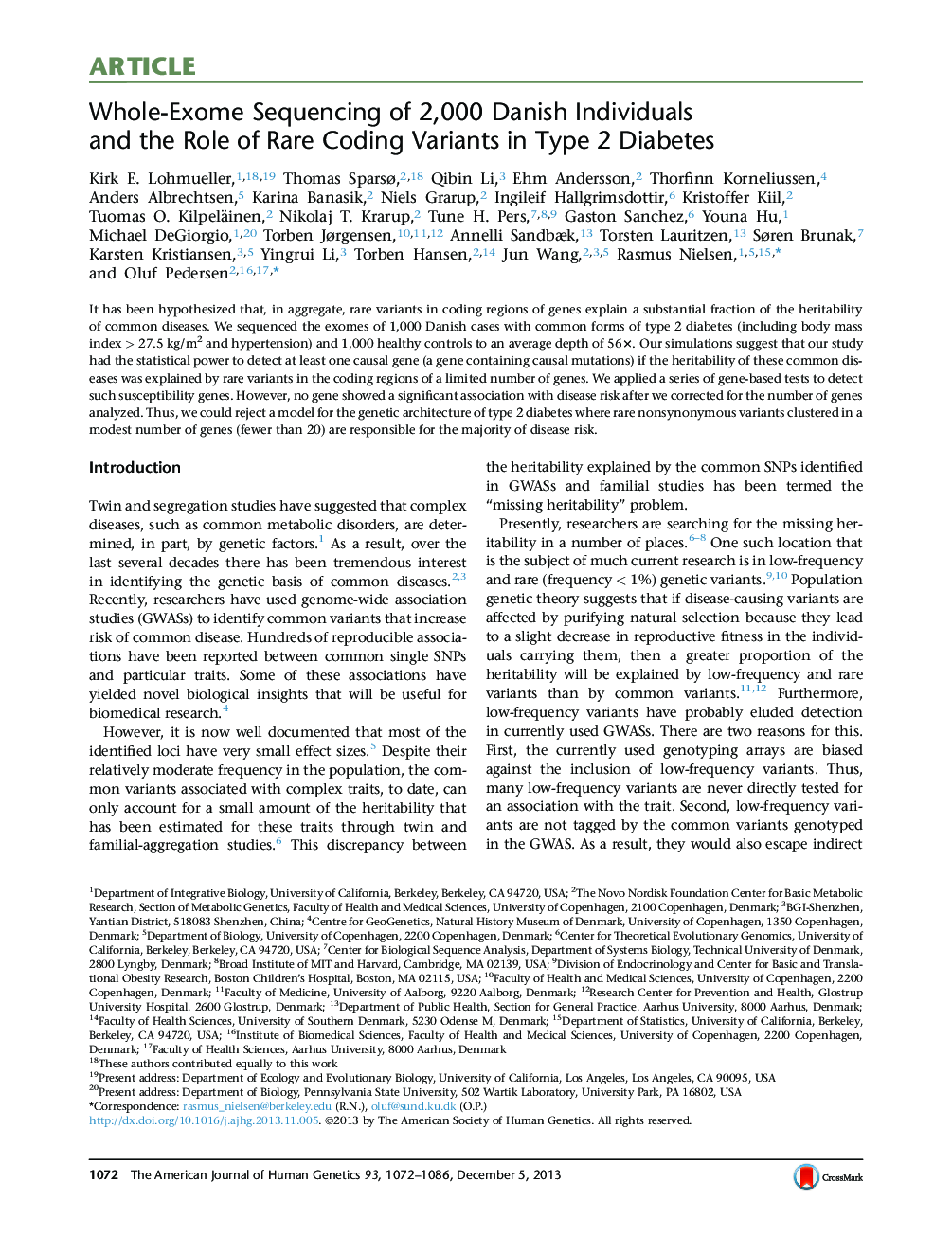| Article ID | Journal | Published Year | Pages | File Type |
|---|---|---|---|---|
| 2811404 | The American Journal of Human Genetics | 2013 | 15 Pages |
It has been hypothesized that, in aggregate, rare variants in coding regions of genes explain a substantial fraction of the heritability of common diseases. We sequenced the exomes of 1,000 Danish cases with common forms of type 2 diabetes (including body mass index > 27.5 kg/m2 and hypertension) and 1,000 healthy controls to an average depth of 56×. Our simulations suggest that our study had the statistical power to detect at least one causal gene (a gene containing causal mutations) if the heritability of these common diseases was explained by rare variants in the coding regions of a limited number of genes. We applied a series of gene-based tests to detect such susceptibility genes. However, no gene showed a significant association with disease risk after we corrected for the number of genes analyzed. Thus, we could reject a model for the genetic architecture of type 2 diabetes where rare nonsynonymous variants clustered in a modest number of genes (fewer than 20) are responsible for the majority of disease risk.
